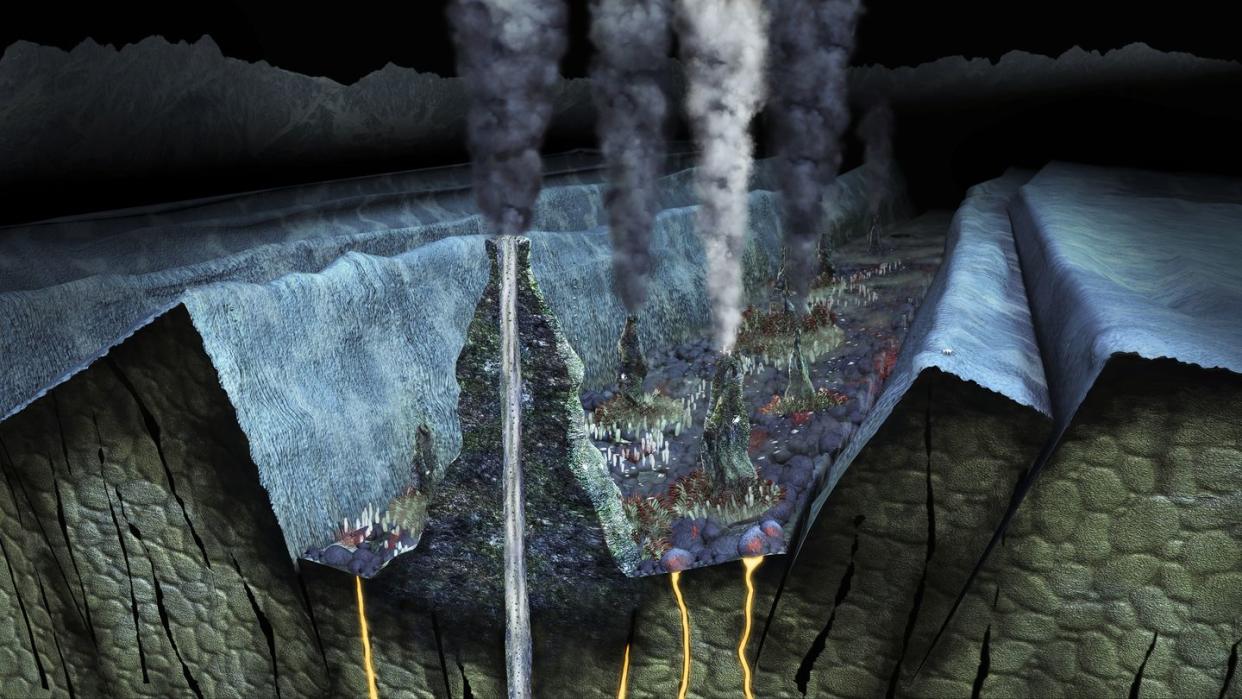Canada Is Bizarrely Shaking—and It Might Be Creating a New Ocean Crust

"Hearst Magazines and Yahoo may earn commission or revenue on some items through these links."
On March 6, Ocean Networks Canada, which operates cabled observatories in the northeastern Pacific, detected over 2,000 low-intensity earthquakes in a single day, peaking at around 200 quakes per hour.
These quakes were located along the Juan de Fuca Ridge, named after a Greek sailor who explored the region in the 16th century, and not the nearby subduction zone that makes up part of the Ring of Fire.
These rumblings are likely caused by "impending magmatic rupture," a cyclical process where the Earth creates new seafloor along the ridge as the Juan de Fuca plate separates from the Pacific Plate.
The Earth is always changing, but this dynamic drama plays out over eons, timescales so immense that our human lives pass in the blink of an eye. But every once in a while, us mere mortals get the opportunity to glimpse the geologic processes that are always churning beneath our feet.
Case in point, earlier this month a record number of low-intensity earthquakes rumbled the Juan de Fuca Ridge located roughly 150 miles off the coast of Vancouver Island in British Columbia, Canada. At its peak on March 6, the ridge delivered roughly 2,000 tremors in a day and as many as 200 sub-4.1 earthquakes within a single hour. The earthquakes were detected by Ocean Networks Canada’s (ONC) Endeavor site, which is part of the North-East Pacific Time-series Undersea Networked Experiments (NEPTUNE) observatory.
This panoply of small quakes is actually a kind of seismic crescendo as the ridge has been experiencing an uptick in rumbling since about 2018. According to OCN, this is the highest frequency of earthquakes in the region since 2005.
Usually, an increase in seismic activity off the Pacific Coast would be cause for alarm. The earthquake-prone Cascadia subduction zone, where the Pacific Plate dips (aka subducts) below the North Atlantic plate, essentially huge the Pacific Coast line and is responsible for some of the most devastating earthquakes in the region’s history. However, these low-level tremors are no cause for concern as it’s occurring along the Juan de Fuca Ridge, which is where the Jaun de Fuca Plate — the smallest tectonic plate in the world — and the Pacific Plate are separating. Thankfully, this seismic action is unrelated to the subduction zones that could one day deliver the ever dreaded Big One.
”No one should be alarmed about this great swarm of earthquakes,” ONC President and CEO Kate Moran said in a press statement. “They are far offshore and cause no danger. Rather, the data are exciting to the science community and certainly not menacing.”
So what is exactly causing all this shaking? Well, one ONC expert suspects that these tremors are a sign of “impending magmatic rupture.” To translate from marine seismology parlance, that means the Earth is cooking up some new ocean floor. Because the Pacific Plate and the Juan de Fuca plate are pulling apart, the resulting crack gets filled with super-hot magma at around 1472 degrees Fahrenheit — but that magma loses its “new seafloor smell” pretty quick as cold seawater solidifies the oozing magma into hardened crust.
According to ONC, this slow seafloor creation occurs in bursts of roughly 20-year cycles, which coincides with a previous uptick in seismic activity back in 2005. It’s not exactly as drama-filled as the concussive volcanic explosions that can alter the surrounding landscape in an instant, but it’s a steady reminder of the Earth’s never-ending process of continuous renewal.
You Might Also Like

